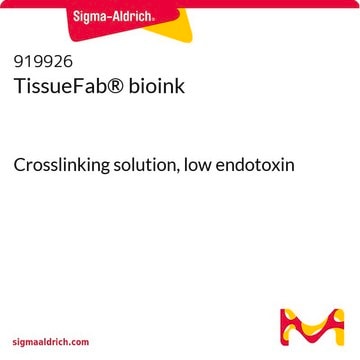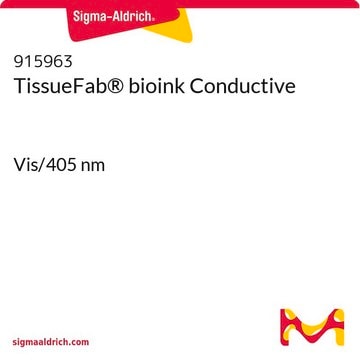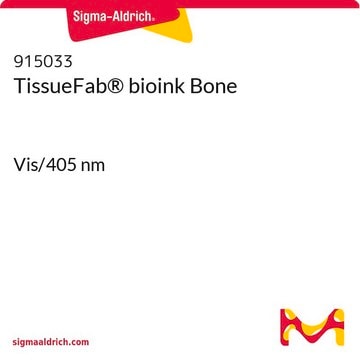Yes, any of GelMA based bioinks, such as 918741, can be used for DLP 3D printing, but some adjustments are needed. The DLP printer should have a heating function, or the bioink needs to be heated before printing to make the GelMA a low viscosity liquid. Additionally, a photo-absorber needs to be added to the bioink to scavenge scattered light.
918741
TissueFab® bioink
(Gel)ma -VIS/405nm, low endotoxin
Sinonimo/i:
Bioink, GelMA, Gelatin methacrylamide, Gelatin methacrylate, Gelatin methacryloyl
Scegli un formato
About This Item
Prodotti consigliati
Livello qualitativo
Descrizione
suitable for 3D bioprinting applications
with LAP photoinitiator
Sterilità
sterile-filtered
Stato
viscous liquid
Impurezze
≤5 CFU/g Bioburden (Fungal)
≤5 CFU/g Bioburden (Total Aerobic)
<50 EU/mL Endotoxin
Colore
colorless to pale yellow
Dimensione particelle
0.2 μm
pH
6.5-7.5
applicazioni
3D bioprinting
Temperatura di conservazione
2-8°C
Cerchi prodotti simili? Visita Guida al confronto tra prodotti
Categorie correlate
Applicazioni
Gelatin methacryloyl (GelMA) is a polymerizable hydrogel material derived from natural extracellular matrix (ECM) components. Due to its low cost, abundance, and retention of natural cell binding motifs, gelatin has become a highly sought material for tissue engineering applications. The addition of photocrosslinkable methacrylamide functional groups in GelMA allows the synthesis of biocompatible, biodegradable, and non-immunogenic hydrogels that are stable in biologically relevant conditions and promote cell adhesion, spreading, and proliferation.
Note legali
Codice della classe di stoccaggio
10 - Combustible liquids
Classe di pericolosità dell'acqua (WGK)
WGK 3
Scegli una delle versioni più recenti:
Certificati d'analisi (COA)
Non trovi la versione di tuo interesse?
Se hai bisogno di una versione specifica, puoi cercare il certificato tramite il numero di lotto.
Possiedi già questo prodotto?
I documenti relativi ai prodotti acquistati recentemente sono disponibili nell’Archivio dei documenti.
Articoli
Bioinks enable 3D bioprinting of tissue constructs for drug screening and transplantation; select suitable bioinks for specific tissue engineering.
Learn how 3D bioprinting is revolutionizing drug discovery with highly-controllable cell co-culture, printable biomaterials, and its potential to simulate tissues and organs. This review paper also compares 3D bioprinting to other advanced biomimetic techniques such as organoids and organ chips.
-
Are there any GelMA products suitable for DLP 3D printing, particularly those that are part of the TissueFab line?
1 answer-
Helpful?
-
Active Filters
Il team dei nostri ricercatori vanta grande esperienza in tutte le aree della ricerca quali Life Science, scienza dei materiali, sintesi chimica, cromatografia, discipline analitiche, ecc..
Contatta l'Assistenza Tecnica.








